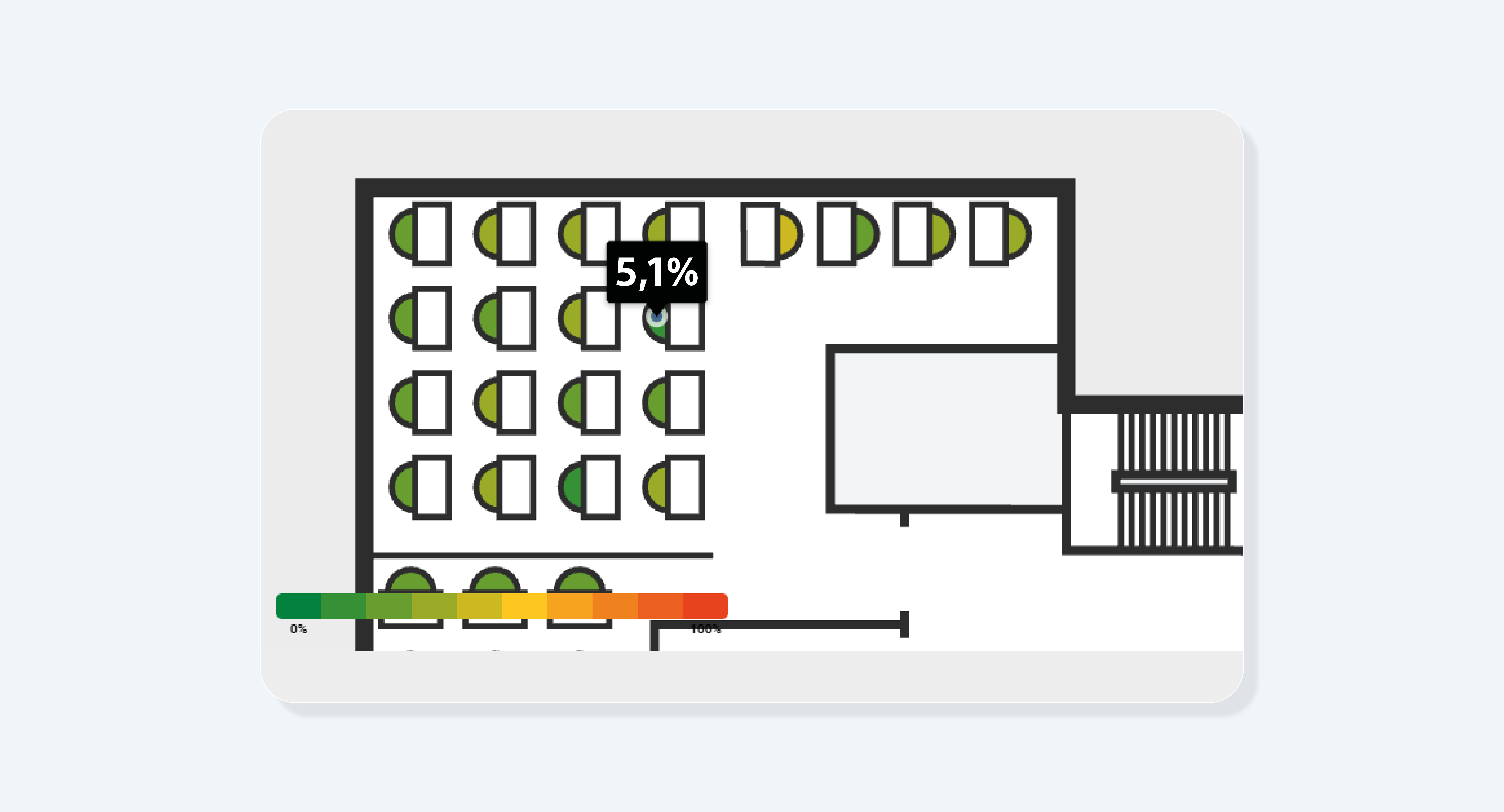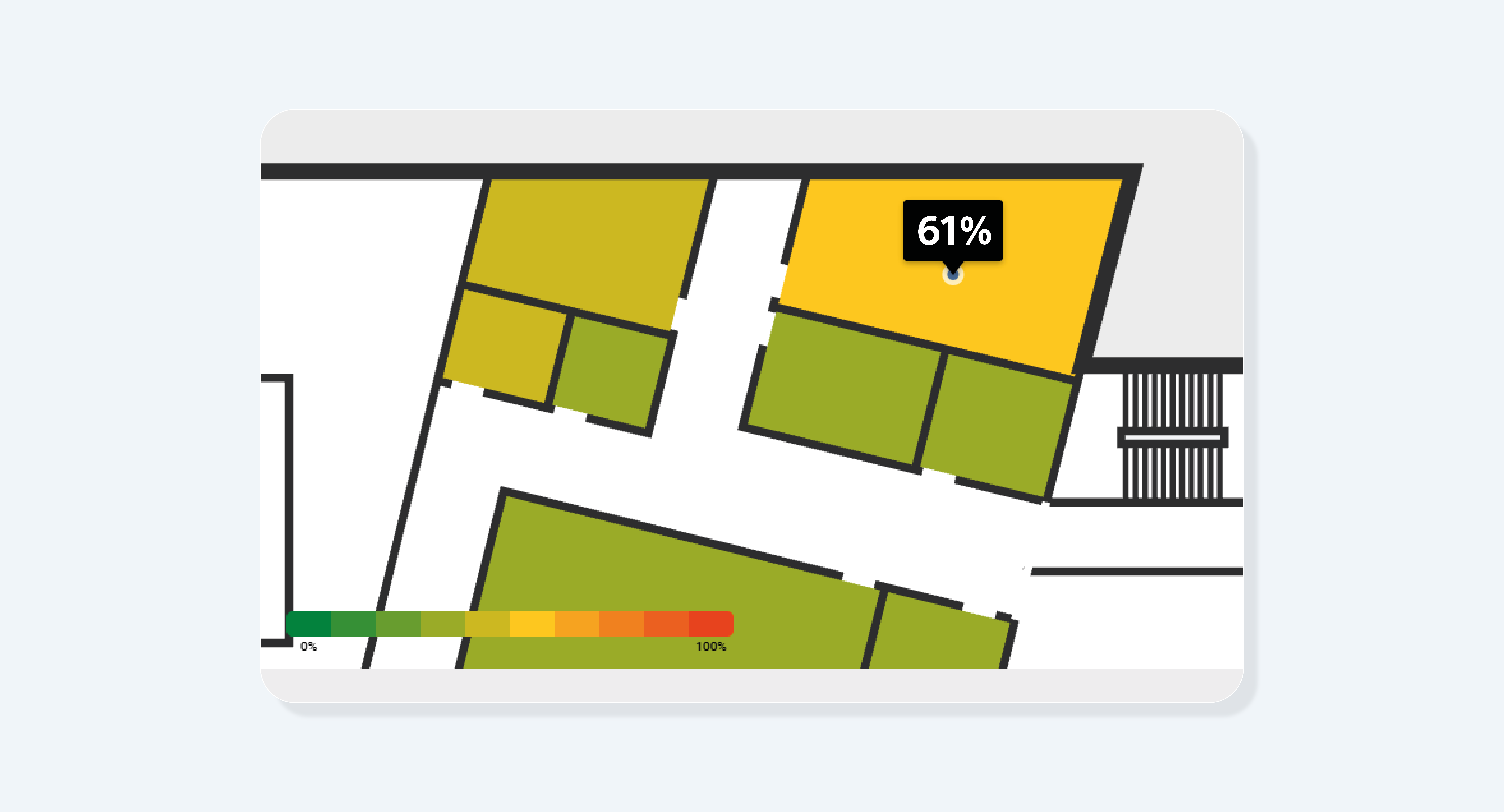As a multinational European retail company approached a lease adjustment period for their headquarters, they were facing a choice about removing an optional property. Before Nimway, these decision were always accompanied by uncertainty. With Nimway, they could make it with confidence. The workplace management leadership looked at their workspace usage data from Nimway, identified underutilization in key areas, and agreed to remove 20% of the square meters from their contract. The decision saved tens of millions of dollars.
The European retail company signed a lease for twelve years when they moved to their new headquarters. To give the company more flexibility, the lease included optional properties that could be removed after a certain number of years. As the end of their first adjustment period approached, they needed to make a decision about whether to include these properties or not.
However, the decision was not so straightforward. The company had undergone several strategic reorganizations, and they had adopted a more dynamic way of working. “We have several ways of working living in parallel, combined with larger changes in the company to embrace hybrid working,” says the Workplace Experience (WX) Manager. “This means our workplaces are very dynamic today. It was much more static before. I think all offices had much more static ways of working 10 years ago.”
While the strategic changes had positive outcomes in general, hybrid working led to some practical difficulties for workplace management. “For example, a business-critical project may come to us, and for the project to succeed we need to find a way for them to sit together and have close exchanges,” says the WX Manager. “Where should these 20+ people sit? What if the project needs a lot of space, but only on Tuesdays? What if our office building has available spaces for it, but the spaces aren’t adjacent? We try to move all the workplace puzzle pieces around. And putting the puzzle pieces together is very challenging.”
"We try to move all the workplace puzzle pieces around. And putting the puzzle pieces together is very challenging.”
The WX manager explains that communicating with teams, evaluating workplace capacity, and managing expectations from corporate leadership are time-consuming and difficult. “Of course, the traditional approach of oversizing the workplace is one solution, but that comes with a large price tag. And not only that, but when your office space is too large, you lose that dynamic feeling. There is no pulse.”
The customer chose Nimway when they moved into their new headquarters five years ago and have used it to manage their dynamic workplace ever since. With sensors detecting available rooms and desks, their office instantly became more intelligent. Workspace availability is visualized on room panels, floor plans, and mobile applications to help colleagues find rooms and desks faster—and book them with less effort.
The customer also used Nimway Analytics to understand long-term space usage and booking trends in their building. This helped workplace management uncover valuable insights and make informed decisions about their workplace layouts. The Tech Service Manager explains: “We benefited greatly from Nimway, because we wanted to make the office layout more efficient. With Nimway we could understand which areas were used and which conference rooms were used. For example, we had two large areas for guest workstations that turned out to be used very rarely. With data to prove this, two large conference rooms were built instead.”
The low average usage of the guest workstations indicated the space could serve a better purpose.

The high usage of conference rooms indicated a shortage of spaces of this kind.

For the customer, it was clear that their guest workstations were rarely used. Most of them were occupied below 10% of the time. Their conference rooms, on the other hand, were in high demand. Feedback from employees confirmed that more conference rooms were needed.
The WX manager agrees Nimway Analytics helped them make data-driven office space decisions. “Before, we would often have to work with a hypothesis,” he says. “Now we can evaluate how employees use existing areas to get the facts. This helps us understand what different teams actually need. We also report to the workplace management forum how many people are visiting the office. This then becomes a foundation for making decisions.” In this forum, they use Nimway data to make decisions about their corporate real estate, too. And during the lease adjustment for the headquarters, this is exactly what they did.
When deciding whether to adjust the size of their lease, the company leadership realized they could make a bold decision about their HQ with confidence. “Data from Nimway helped our company leadership confidently make a decision that saved us tens of millions of dollars during our upcoming lease period: to remove 20% of our office space. There is usually so much uncertainty around such a decision. But not with Nimway,” says the WX manager.

The change of lease occurred halfway through the year. Out of approximately 1200 workspaces in the customer’s previous lease, on average only about 250 were used at the same time. Occasionally, there was a peak of 500 seats that were occupied. Reducing the workspace count was an obvious choice, and it resulted in a higher average occupancy.
The reason they had such confidence? Long-term occupancy data from Nimway proved that their office space was oversized. “Before the decision, we had 1200 workspaces in our lease,” says the WX manager. “But we saw in Nimway Analytics that, on average, only 250 workspaces were used at the same time. Yes, we reached a peak of 500 users about 8–10 times a year. But this is still well below 1200. It was therefore easy to make the decision to opt out of the additional spaces in the lease, so that we only had 900 workstations.” The best path forward was clear, and the decision was made faster and more pain-free too. “With occupancy data from Nimway, it was easy to have a dialogue with management about these changes, to show that it is not just based on perception. Perception is one thing, but it needs to be combined with facts.”
The success of using Nimway to save costs in real estate decisions—in addition to providing a smoother employee experience in a dynamic workplace—are what drive the customer to roll out Nimway in more offices during 2025. “Right now, we are remodeling another office that does not have Nimway installed, and therefore no occupancy data for our decisions. It really shows just how much Nimway helps.”
“Right now, we are remodeling another office that does not have Nimway installed, and therefore no occupancy data for our decisions. It really shows just how much Nimway helps.”
Sega Sammy made it easy for teams to work together in their shared office space.

De Laval reveals how they are renovating with sensors and occupancy data.

Öresundskraft used Nimway to understand their activity-based workplace—and improve it.

Copyright © 2025 Sony Network Communications Europe. All rights reserved